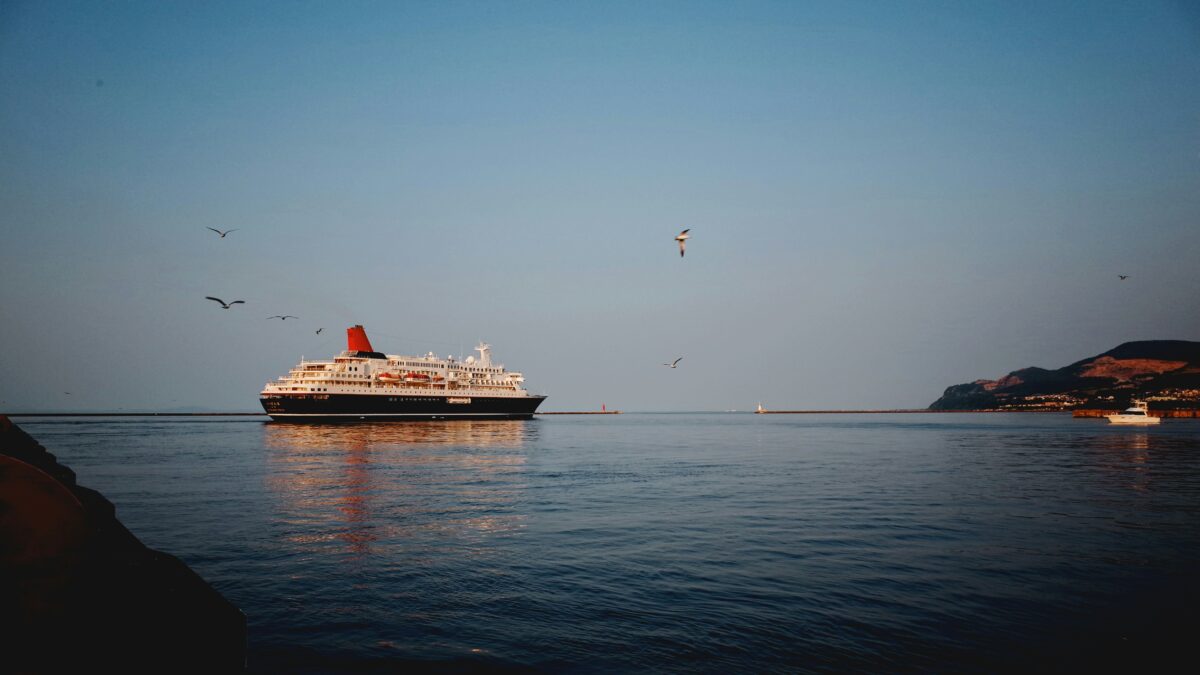In 2019, over 29.7 million people took cruise ship vacations. With such a high demand for cruises, the industry generates over $55.5 billion annually in the United States. Although the industry is an enormous economic contributor, this comes with environmental costs. The cruise ship industry is notorious for causing many different forms of environmental damage due to the massive carbon footprints of the ships themselves, and the amount of waste from the resources used by passengers. With over 3,000 passengers living on a ship for 2 weeks, cruise ships have been compared to “floating cities” for the amount of pollution they create from voyage to voyage. Wastewater disposal is environmentally concerning as cruise ships dump thousands of gallons of sewage into the ocean, harming wildlife and marine ecosystems. In addition, the laws and regulations of cruise ship waste disposal are vague and lack enforcement, which further contributes to the problem as cruise ship employees don’t concern themselves with proper waste disposal.
There are many different kinds of cruise ship waste, including gray water from showers, sinks, washing machines, and kitchens; sewage or “black water” from toilets; and even solid wastes like paper, plastic, and glass. The most concerning type of waste is gray and black water, because it is dumped directly into the ocean by cruise lines. Oceana, an ocean advocacy organization, estimates that the average 3,000 passenger and crew cruise ship produces about 30,000 gallons of black water sewage a day, and 255,000 gallons of gray water a day. Additionally, according to the Environmental Protection Agency, the cruise ship industry dumps over 1 billion gallons of sewage into the ocean every year. Such high figures then beg the question of how wastewater affects the ocean and ultimately humans.
Both gray and black wastewater contain harmful bacteria that, once dumped into the ocean, harm marine wildlife and ecosystems. Gray water carries a plethora of pathogenic viruses, fecal coliform bacteria, and hazardous wastes from pharmaceutical chemicals, toxic cleaners, nutrients, and both macro and microplastics. Black wastewater mostly contains a host of pathogens like fecal coliform bacteria, salmonella, and hepatitis. Nutrients in both gray water and black water, specifically nitrogen and phosphorus, lead to harmful algae blooms that deplete oceanic oxygen, suffocating corals, fish, and other marine life. Furthermore, toxic chemicals from shower and cleaning products in gray water can contain carcinogens that enter the marine food web and eventually reach humans through seafood. The contaminants released by gray and black water eventually enter humans, posing serious health concerns. Considering the tremendous risks to marine life and human health resulting from the millions of gallons of wastewater that are dumped by cruise ships every month, it is imperative to review the existing laws and regulations meant to reduce these risks.
Currently, there are laws and regulations in place to combat cruise ship ocean pollution. However, the efficacy of these laws are often contested. In 1970, the International Maritime Organization created a set of 6 marine pollution, or MARPOL, annexes related to ocean pollution from cruise ships. MARPOL Annex IV specifically addresses sewage and wastewater, and prohibits cruise ships from dumping sewage into the ocean unless it has been filtered through an approved sewage treatment plant and the ship is 3 nautical miles from the nearest coast. Despite the international regulation, though, there are no enforcement protocols nor compliance monitoring protocols, meaning that cruise ships are not required to disclose whether regulations are being followed. Thus, cruise lines continue to dump untreated sewage without repercussions. Similarly, domestic laws in the United States prohibit dumping of untreated wastewater within coastal waters; there are no regulations for wastewater being dumped past 3 miles off the coast, though. Cruise ships are legally allowed to release untreated wastewater past the 3 mile limit, which is concerning because the flow of water eventually transports the wastewater towards the coast, rendering the 3 mile limit pointless. Ultimately, the cruise ship industry is largely unregulated, with lax laws in place that only marginally limit ocean pollution.
Cruise ships are immensely damaging to the environment. Not only do they emit more carbon dioxide than airplanes, they also harm marine life and ocean ecosystems through untreated wastewater discharge. With thousands of passengers aboard a ship for 2 weeks, cruise ships must deal with human waste from all the activities of daily living. While these activities generate many types of waste, gray and black wastewater are of utmost concern because of the various pathogens and bacteria they contain, which eventually end up dumped by cruise lines into the ocean. Furthermore, toxic chemicals are ingested by sea creatures, effectively entering the food chain and reaching humans through seafood. Thus, wastewater has led to both environmental and public health concerns. The lack of enforced regulations has done nothing to curb the discharge of untreated sewage into oceans. If cruise ships remain unregulated while continuing to grow as an industry, the problem will not improve.
Sources:
Chen, W. (November 3, 2018). Sewage and Ships – Rules and Realities. https://www.maritime-executive.com/editorials/sewage-from-ships-rules-and-realities-1
Copeland, C. (July 1, 2008). Cruise Ship Pollution: Background, Laws, and Regulations, and Key Issues. https://digital.library.unt.edu/ark:/67531/metadc87283
Cruise Lines International Association (November 17, 2020) Cruise Industry Contribution to US Economy Grew to $55.5 Billion in 2019, Generating More than 436,000 American Jobs. https://cruising.org/en/news-and-research/press-room/2020/november/cruise-industry-contribution-to-us-economy-grew-to-55-billion-in-2019#:~:text=In%202019%2C%20the%20cruise%20industry,increase%20in%20industry%2Dsupported%20jobs.
Friends of the Earth (n.d). Cruise Ships Flushed More than 1 Billion Gallons of Sewage Last Year. https://foe.org/news/2013-10-cruise-ships-flushed-more-than-1-billion-gallons-of-sewage-last-year/
Guildford, G. (December 9, 2014). Cruise Ships Dump 1 Billion Gallons of Sewage into the Ocean Every Year. https://qz.com/308970/cruise-ships-dump-1-billion-tons-of-sewage-into-the-ocean-every-year
Oceana (n.d). Needless Cruise Pollution: Passengers Want Sewage Dumping Stopped https://usa.oceana.org/sites/default/files/reports/polling_report1.pdf
World Wildlife Fund (May 19, 2020). Grey Water Dumping Threatens Ocean Health and People https://wwf.ca/stories/grey-water-dumping-threatens-ocean-health-and-people/

